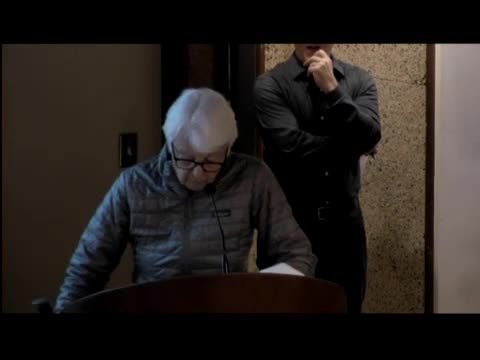Residents demand hydrology review and story poles for Camino Alto project
May 01, 2025 | Mill Valley, Marin County, California
This article was created by AI summarizing key points discussed. AI makes mistakes, so for full details and context, please refer to the video of the full meeting. Please report any errors so we can fix them. Report an error »

During the recent City Council meeting in Mill Valley, community members raised critical concerns regarding the city's general plan and its implications for local safety and environmental resilience. A key discussion centered on the need to incorporate hydrology into the planning process, particularly in relation to tsunami risk and climate change.
One resident emphasized the importance of including accurate hydrological data in the Environmental Impact Report (EIR) and the general plan. They pointed out that while tsunamis are rare, the potential risk should not be overlooked. The resident urged the council to ensure that hydrology is part of the ongoing discussions about adaptive planning for sea level rise, highlighting the necessity of addressing climate change in future policies.
Another topic of concern was the Richardson Project on Camino Alto, where a resident expressed frustration over the lack of story poles during the design review process. Story poles are used to visualize the height and scale of proposed buildings, and the resident argued that they are essential for community input. They noted that other cities successfully utilize story poles, countering claims that they are unnecessary or discriminatory.
Additionally, residents requested clarity on upcoming meeting dates related to the project timeline, emphasizing the need for transparency to help the community plan accordingly.
The discussions from this meeting reflect a growing awareness among Mill Valley residents about the importance of proactive planning in the face of environmental challenges and the need for community engagement in development processes. As the city moves forward, these concerns will play a crucial role in shaping policies that prioritize safety and sustainability for all residents.
One resident emphasized the importance of including accurate hydrological data in the Environmental Impact Report (EIR) and the general plan. They pointed out that while tsunamis are rare, the potential risk should not be overlooked. The resident urged the council to ensure that hydrology is part of the ongoing discussions about adaptive planning for sea level rise, highlighting the necessity of addressing climate change in future policies.
Another topic of concern was the Richardson Project on Camino Alto, where a resident expressed frustration over the lack of story poles during the design review process. Story poles are used to visualize the height and scale of proposed buildings, and the resident argued that they are essential for community input. They noted that other cities successfully utilize story poles, countering claims that they are unnecessary or discriminatory.
Additionally, residents requested clarity on upcoming meeting dates related to the project timeline, emphasizing the need for transparency to help the community plan accordingly.
The discussions from this meeting reflect a growing awareness among Mill Valley residents about the importance of proactive planning in the face of environmental challenges and the need for community engagement in development processes. As the city moves forward, these concerns will play a crucial role in shaping policies that prioritize safety and sustainability for all residents.
View full meeting
This article is based on a recent meeting—watch the full video and explore the complete transcript for deeper insights into the discussion.
View full meeting
